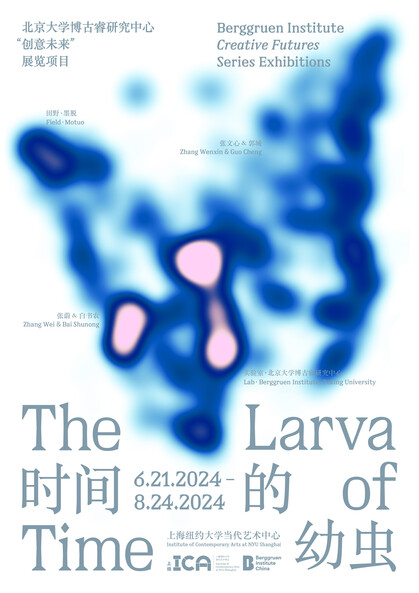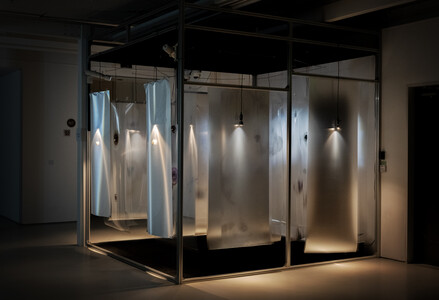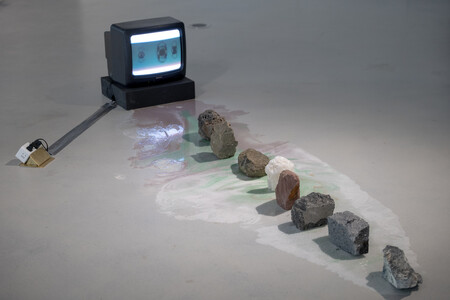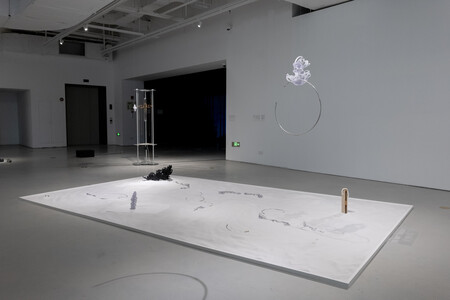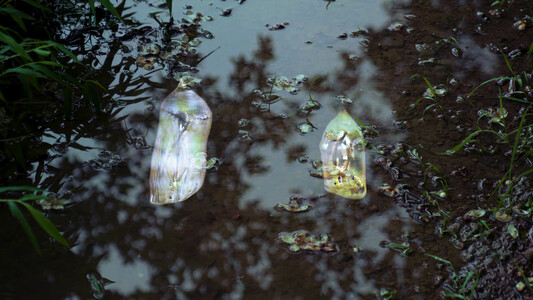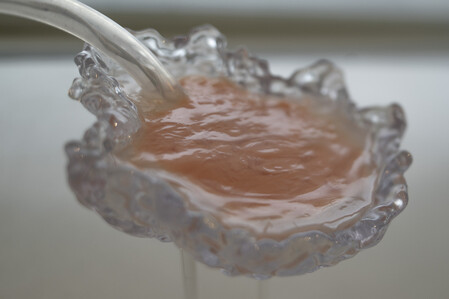Group Exhibition Institute of Contemporary Arts at NYU Shanghai, Shanghai
The Larva of Time
Artists: BAI Shunong, GUO Cheng, ZHANG Wei, ZHANG Wenxin, Iris Long
Duration: 21/06/2024-24/08/2024
The Larva of Time is an interdisciplinary curatorial and research project, realized as part of the “Creative Futures” initiative at the Berggruen Research Center at Peking University and exhibited in partnership with the Institute of Contemporary Arts (ICA) at NYU Shanghai. Commenced in the summer of 2022, The Larva of Time invited artists and scientists to investigate unnoticed temporal imprints in the processes of artistic and scientific research, exploring the contextual resonances between art and science. Curated by 2022-23 Berggruen Fellow Iris Long, the exhibition features eleven works, co-created by the exhibiting artists and scientists BAI Shunong, GUO Cheng, ZHANG Wei, and ZHANG Wenxin, all derived from the project’s research and commissions.
Time, an epistemological subject of shared interest among the four participants, has multiple manifestations in this project, ranging from the surface residues of microorganisms to bifurcations and diversity on an evolutionary scale to Earth's shifting geological and ecological epochs. The introduction of the book Arts of Living on a Damaged Planet (University of Minnesota Press, 2017) proposes a concept of time in which contemporary humans sweep across the world, bringing “multiple times”[1] rather than constructing a singular future. Each version of time leaves distinct marks on the Earth, and this conception of time aligns with the temporal notions examined in the exhibition. The Larva of Time is a shared contemplation of metamorphosis, an intimate yet expansive invisible cocoon created by two artists and two scientists over nearly two years through correspondence, visits, dialogues, and fieldwork.
These plural times could be technological, geological, biological, entangled, and buried. Unlike common modes of collaboration between art and science, this project regards the participants as co-creators rather than merely using science as a source of material or a provider of technology, tools, or experiments. The four participants interweave their creative and research processes, temporarily setting aside their original identities and habits. The foundation of this project is not simply interdisciplinary; it is an attempt at something "pre-disciplinary," something imperfect, unfinished, and larval.
The exhibition is accompanied by a series of related public programs that delve into the exhibition's subject from various perspectives, offering critical, participatory, or playful entry points.
[1] Anna Lowenhaupt Tsing et al., eds., Arts of Living on a Damaged Planet: Ghosts and Monsters of the Anthropocene (Minneapolis: University of Minnesota Press, 2017), 7.
More Pictures:

